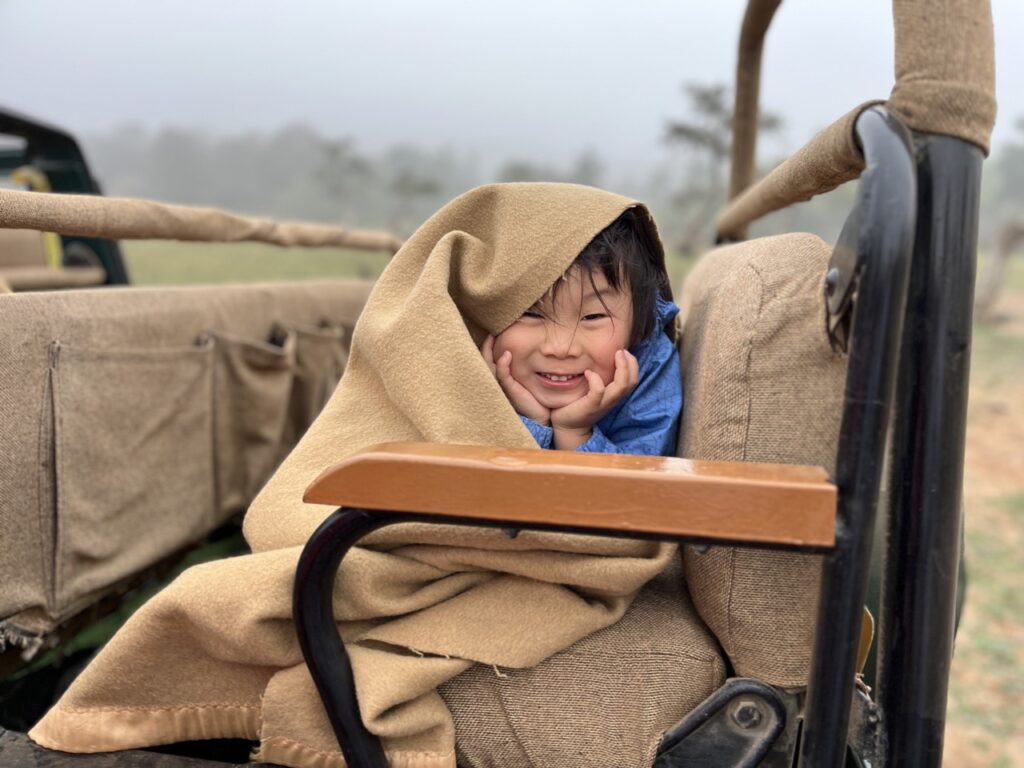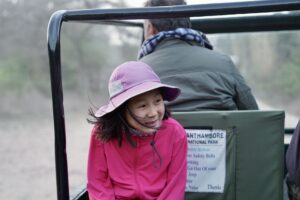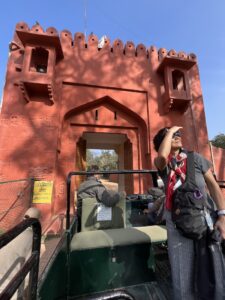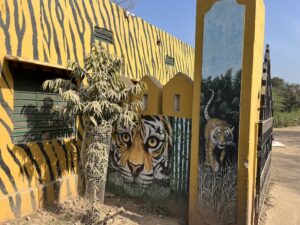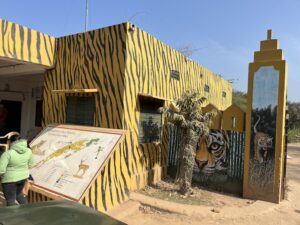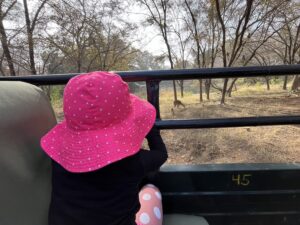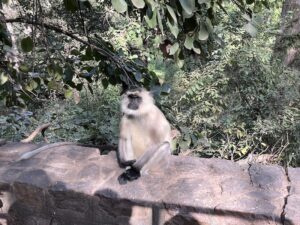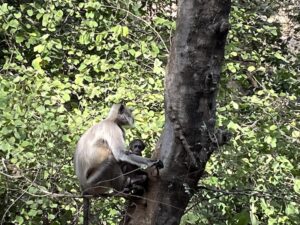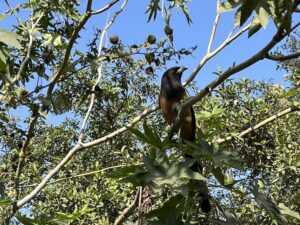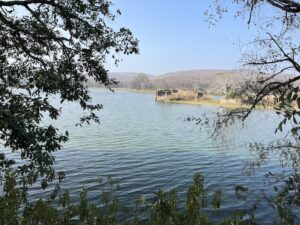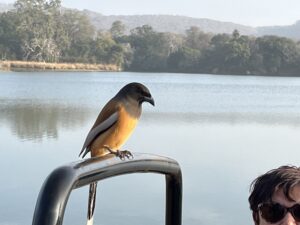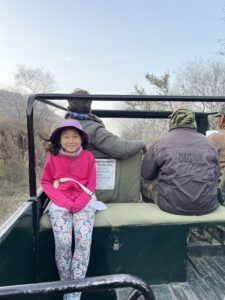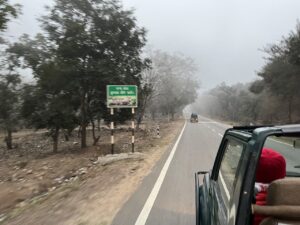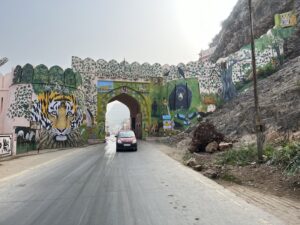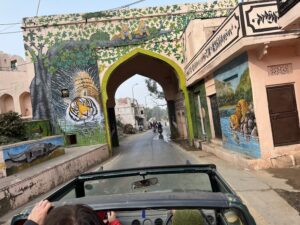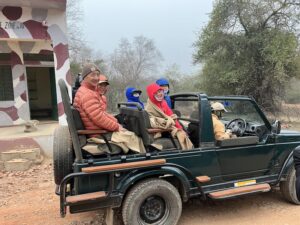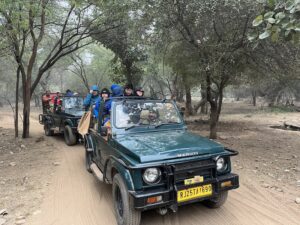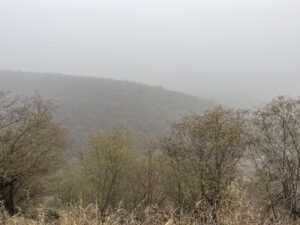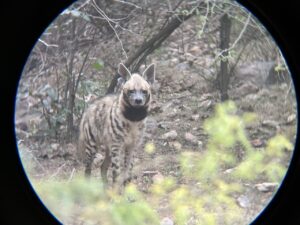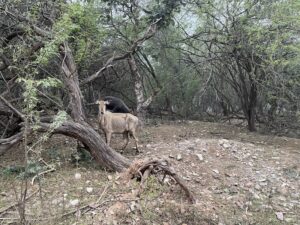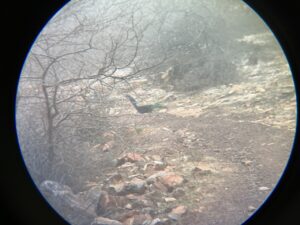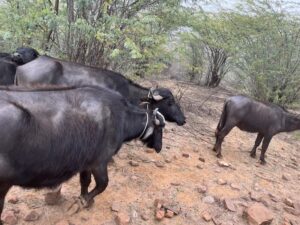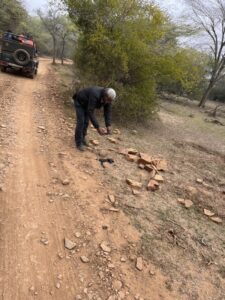We had an unforgettable time on safari during our months in Kenya and South Africa. With more than 70 safari hours under our belt, we are no strangers to game viewing. It is a pursuit that never gets old – the drive through miles of wild terrain that could only be done in a 4WD; the anticipation of a sighting – maybe a big cat, maybe a cub, maybe a kill; the search for a flicker of movement or a break in the camouflage. If you are patient and most importantly lucky, the exhilaration of a sighting – seeing a lion or leopard or cheetah in the wild, so close you can see the fur on its body rising and falling with its breath. Whether it is the first time or the tenth time, it is always a thrill to see one of these majestic creatures in their natural habitat. We were keen to experience a safari in a totally different biome with the unguarded hopes of catching a glimpse of the elusive tiger.
Tigers are an endangered species and there are only about 4500 tigers in the wild remaining in the world today. With nearly 3000 tigers, India has the largest tiger population in the world. Tigers are territorial and usually solitary, with the exception of mating season. Although they live and hunt alone, they communicate with other tigers using sounds. They are largely nocturnal creatures but can also be active during the day.
Ranthambore National Park is one of the 55 protected areas in India that are designated as tiger reserves. The national park occupies less than 400 square kilometers of the Ranthambore forest that sprawls over 1,300 square kilometers. The park is tiny compared to Masai Mara’s 1500 square kilometers or Kruger’s 20,000 square kilometers. Ranthambore is home to 88 Bengal tigers. The odds of seeing a tiger, according to the Ranthambore website, is 70%. To me, that figure seems highly dubious.
Tiger safaris in Ranthambore National Park must be guided, so no self-drive safaris here. Safaris are organized by ten area zones and visits to the park are limited to the zone that you book. Tigers can travel freely across zones, but visitors cannot. According to the Ranthambore website, Zones 2 to 5 are considered the best zones for tiger spotting as they are part of the original park. Zones 6 to 10 were added in later. When we were making the booking, our tour agent told us that there had recently been an influx of sightings in Zone 10. We booked safaris for Zones 3 and 10.
Afternoon Game Drive in Zone 3
We were picked up at 1:30 pm at our hotel, Nahargarh Ranthambore, in an open-top 20-seat canter by a driver/tracker. With the wind blowing in our faces and a safari adventure ahead, we felt like the good old days were back again.
We entered the park through the Jogimahal Gate and drove on a dirt path through dry deciduous forest and grassy meadows bordered by craggy low hills. The driver/tracker spoke decent English but wasn’t as engaging as the guides from Kruger and nothing close to our all-time-favorite safari guide, David in the Mara.
There seemed to be a good density of animals and we spotted a sambar deer with enormous antlers, langur monkeys including one carrying a baby and a colorful rufous treepie right away.
Zone 3 includes three of the largest lakes in Ranthambore so we were able to enjoy the views around the lake and spot some water-dwelling animals. We spotted an Indian flapshell turtle half submerged in the water, a spotted owl in a tree, several crocodiles half-asleep on the bank of the lake and spotted deer.
The vehicle next to us were paid a special visit by a rufous treepie, known to have a friendly personality.
We kept our tiger-sighting hopes up, but with wild animals, there is never any guarantee. Unlike in Masai Mara and Kruger where chances are higher because trackers communicate with each other over cell phones to let colleagues know if they see something, there is no communication between trackers at Ranthambore. The guide attributed this to the spotty cell service in the park.
The minutes continued ticking by and as our end time was drawing near, the tracker was getting anxious too. He drove back and forth over areas that he thought had the highest chance. But luck was not on our side today. No tiger sighting during our drive.
Morning Game Drive in Zone 10
Early the next morning at 6:30 am, we departed in three jeeps for our visit to Zone 10. We were dressed for cold weather, but in the open-top jeep, it was even colder than we anticipated. Luckily, the jeeps were prepared with thick blankets so we had an extra layer to help keep us warm. We wrapped the kids up like burritos to block out the wind.
The terrain in Zone 10 looked more barren and craggy. In the absence of sunlight and with with the dense fog, the forest looked foreboding, like it was hiding something that it didn’t want us to see.
Since this would be our last opportunity to see a tiger, we certainly wanted to optimize our chances. When we reached a clearing in the forest, Leo made sure everybody was on the same page. He told the drivers/trackers in no uncertain terms that a big tip awaited the tracker that led us to a tiger. Just as we hoped, upon hearing this, the tracker in our vehicle perked up and we could tell that he was extremely motivated. Every so often, he stopped the vehicle and stood up, eyes darting through the forest. He cocked his head to listen – not for the sound of a tiger, but for the sound of bird calls informing the creatures of the forest that a predator was nearby.
Almost straight away, the tracker spotted something in the woods. He maneuvered the jeep to follow alongisde the animal while maintaining a respectful distance. To our eyes, it was almost perfectly camouflaged in the forest, but through a small clearing, we could see something. A hyena walked steadily through the brush, probably after a night of hunting. It was headed back to its den to sleep through the day.
We spotted a few more animals including a female and male nilgai, the largest antelope in India. From a distance, we saw an indian peafowl, more commonly known as a peacock, race by. In the understory of the forest, we spotted a white-throated kingfisher with its distinctive flamboyant turquoise coat and the more modest pied kingfisher with its black and white feathers.
We waited for some minutes in front of a watering hole collectively willing a tiger to magically materialize. To prove that we were not idling but were purposefully waiting in the right place, the tracker pulled out his phone and showed us photos of a previous drive when he had spotted a tiger in this very location. The photos were at close range, probably no more than three meters away. The tiger, with his head bowed, drank thirstily from the watering hole.
We continued driving through the rocky terrain studded with low trees. We encountered some domestic cattle passing through.
We were all very cognizent that time was passing and still no tiger. Because we only had enough time for two game drives, with this being the last, the pressure to spot a tiger was palpable. The driver/tracker sped around in desperate search of a tiger and we were entirely complicit. The feeling was very different from our time in Africa where we had all the time in the world to explore, observese and encounter as many animals as nature presented. In Kenya, we had endless kilometers and unlimited hours in Enonkishu Conservancy, Masai Mara, Ol Pejeta and Amboseli National Parks. In South Africa’s Kruger National Park, we booked game drives organized by the park and on top of that, had unlimited hours of self-drive safaris. In Ranthambore, our limited time put us at the mercy of chance or luck or whatever you want to call it, and there was nothing we could do about it.
The closest we got to a tiger was on our way out of the park. Not far from the exit, we saw a park employee inspecting a pile of tiger poo. He said it was very fresh. From the looks of it, it was probably less than an hour old.
We drove out of the park feeling disappointed. It wasn’t in the cards for us. Maybe next time we’ll have better luck.
Author
-

Song is the mother of four children. She and her family have stepped away from it all and in September 2023, began traveling the world while homeschooling. Song is an ABC (American born Chinese) and has an undergraduate degree from Cornell and an MBA from Harvard. She is an entrepreneur and an educator. Her hobbies include learning, traveling, reading, cooking and baking, and being with children.

